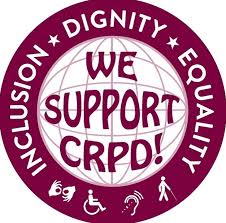The Time for Collective Disability Advocacy Is Now: Lessons Learned from the United Nations Convention on the Rights of Persons with Disabilities

The United Nations Convention on the Rights of Persons with Disabilities (CRPD) is groundbreaking for many reasons. The CRPD is a treat that promotes, protects and ensures equal rights of all persons with disabilities and has been ratified by 191 countries worldwide. It serves as a shift from viewing people with disabilities as in need of charity or treatable only through medical intervention, to recognizing disability rights as core human rights and persons with disabilities a natural part of humanity worthy of respect and celebration.
However, the process of developing the CRPD was also unique in representing one of the first times disability advocates worldwide successfully united to achieve a shared advocacy agenda. This degree of unity wasn’t always consistent at the start. During initial meetings of the General Assembly Ad Hoc Committee mandated to consider proposals for a treaty, organizations of persons with disabilities (OPD), disability service providers, and disability leaders spoke out about their respective issues and concerns. Although such testimonials were essential to help career diplomats understand the relevant issues and their importance, these efforts were often duplicative, and even at times contradictory of other advocacy efforts. This lack of collective voice was disjointed, at times confusing to UN Member State delegations, and consequently ineffective.
Recognizing that without a more unified, consistent, and coordinated approach there would be less influence on the CRPD development process, the global disability community intentionally came together in a more coherent way. It established the International Disability Caucus (IDC), comprised of members of different disability-specific OPDs, service providers and NGOs, and individual leaders. There were organizations representing global entities as well as regional representatives.
Disability advocates from around the world came together and rallied behind a unified message. As a result, approximately 70% of the CRPD includes direct language and contributions made by the global disability community. Such extensive influence by civil society over the final text of an international agreement reflected a landmark success in United Nations history.
Under the guise of eliminating all references to Diversity, Equity, and Inclusion (DEI) initiatives and purportedly to protect against “waste, fraud, and abuse,” the Trump Administration is systematically cutting critical programs and reducing oversight of services that millions of Americans with disabilities rely on to survive. In just the last two months alone, the following actions have taken place:
- The Department of Justice announced penalties for programs that promote accessibility.
- The Department of Education has been gutted. Over half of its staff has been terminated, and plans have been announced to shut it down permanently.
- Cuts to National Institutes of Health (NIH) funding threaten the future of disability-related medical research.
- Proposed Medicaid cuts endanger healthcare access for over 10 million children and adults with disabilities.
Even this week, staff reductions at the Department of Health and Human Services were announced, with the full impact on adults and children with disabilities remaining unknown.
The U.S. disability community should explore the lessons learned from the CRPD negotiations, and find ways to collectively come together to speak out against the intentional and devastating dismantling of disability domestic rights and services.
It is time for groups—regardless of disability or sector—to unite and advocate together. This approach should include:
- A consortium to share important updates and information in real-time
- Developing and dissemination of joint advocacy messaging
- Sharing outreach and publications to engage their respective communities
Taking lessons learned from the CRPD process, US groups must join together—if not already—to combat the current domestic attack on the rights of persons with disabilities. This must happen now, or we may have few rights left to fight for.
